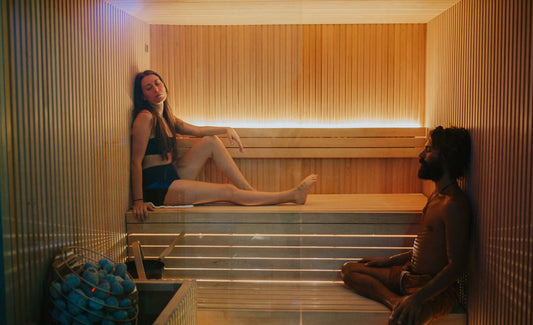Viking attire was more than just practical—it was a reflection of their culture, status, and the harsh environments they inhabited. This guide delves into the clothing of the Vikings, breaking down their attire for various settings and social classes, and exploring how their clothing adapted to different needs and occasions.
Understanding Viking Attire
Viking clothing was designed to be functional and suited to the diverse climates and activities of the Norse world. Clothing not only served practical purposes but also symbolized social status and cultural identity. The Viking Age spanned from the late 8th century to the early 11th century, and the clothing varied significantly based on geography, period, and individual wealth.
Men’s Attire in the Viking Age
1. Everyday Wear
Tunic and Trousers:
-
Tunics: The most common garment for Viking men was the tunic, typically made from wool or linen. Tunics were generally knee-length and featured a simple design, often with a straight cut and minimal decoration. Wealthier individuals might have tunics with elaborate embroidery or added decorative elements.
-
Trousers: Vikings wore wool or linen trousers that were either straight-legged or slightly tapered. The trousers were usually tucked into boots or secured with a belt.
Footwear:
- Shoes: Viking men wore sturdy leather shoes or boots. These were typically ankle-high and were designed to protect the feet from the rough terrain. The design was simple, with minimal decoration, and the shoes were fastened with leather thongs or straps.
Outerwear:
- Cloaks and Capes: For added warmth, Vikings wore cloaks or capes made from wool. These outer garments were fastened with brooches or clasps and were essential for protection against the cold weather of Scandinavia.
Accessories:
-
Belts: Leather belts were a common accessory, used to hold up trousers and as a practical means of carrying tools or weapons. Belts were often decorated with metal buckles or fittings.
-
Hats and Headgear: Viking men might wear simple woolen hats or hoods to protect against the elements. Some headgear, like iron helmets, was reserved for warriors and had specific designs and features.
2. Special Occasions
Formal Attire:
-
Decorative Tunics: For special occasions, such as feasts or important gatherings, Viking men might wear more elaborate tunics with intricate patterns or embroidery.
-
Fur-lined Cloaks: Wealthier individuals would wear cloaks lined with fur for added luxury and warmth. These cloaks were often longer and more richly decorated than everyday wear.
Footwear and Accessories:
-
Embellished Shoes: Formal footwear might include shoes with more decorative elements, such as intricate leather work or metal fittings.
-
Jewelry: Viking men of higher status often wore rings, brooches, or necklaces made of precious metals and stones. These items were not only decorative but also signified social status.
Women’s Attire in the Viking Age
1. Everyday Wear
Gowns and Dresses:
-
Underdresses: Viking women commonly wore an underdress, or shift, made from linen or wool. This garment was worn close to the skin and provided a layer of warmth.
-
Overdresses: Over the underdress, women wore a long gown or dress, typically made from wool. These dresses were often sleeveless and fastened at the shoulders with brooches or pins.
Footwear:
- Shoes: Similar to men, Viking women wore leather shoes or boots. These were practical and designed to protect the feet while allowing ease of movement.
Outerwear:
- Cloaks and Shawls: Women wore woolen cloaks or shawls, which were fastened with brooches. These garments were essential for warmth and could be draped over the shoulders or wrapped around the body.
Accessories:
-
Belts: Women wore belts, often decorated with metal fittings, to cinch their gowns and to carry small items or tools.
-
Headgear: Women sometimes wore simple hats or headscarves. Headbands or woven head coverings were also common.
2. Special Occasions
Formal Attire:
-
Elaborate Dresses: For significant events or feasts, Viking women donned more elaborate gowns with decorative embroidery, patterns, or additional layers.
-
Fur and Embellishments: Wealthier women might wear cloaks lined with fur or dresses adorned with intricate designs. Accessories and garments were often more richly decorated.
Footwear and Accessories:
-
Jewelry: Viking women of higher status wore jewelry such as brooches, necklaces, and rings. These items were often made from precious metals and adorned with gemstones or intricate designs.
-
Decorative Accessories: Brooches and pins used to fasten garments were often elaborate, serving both functional and decorative purposes.
Special Considerations and Tips
1. Cultural and Social Context
Status and Wealth:
-
Material and Decoration: The quality and decoration of Viking clothing were closely tied to an individual's status and wealth. Higher social classes had access to finer materials and more elaborate designs.
-
Regional Variations: Clothing styles could vary based on region. For example, Viking attire in coastal areas might be different from that in inland regions, reflecting local resources and climate.
Ceremonial Attire:
- Rituals and Celebrations: Specific attire was worn for rituals, ceremonies, and feasts, often involving more luxurious materials and intricate designs.
2. Adapting to the Environment
Climate Adaptation:
-
Layering: Viking clothing was designed to be layered, allowing individuals to adapt to changing weather conditions. Wool and fur were essential for insulation against the cold Scandinavian climate.
-
Practicality: Garments were made to be durable and functional, suitable for both everyday activities and the rigors of Viking life.
Conclusion
Viking clothing was a blend of practicality, cultural significance, and social status. From everyday wear to formal attire, the Vikings used their clothing to adapt to their environment and express their identity. Understanding Viking attire offers valuable insights into their daily lives, social structures, and cultural practices. By examining their clothing, we can gain a deeper appreciation for the complexity and richness of Viking society.


